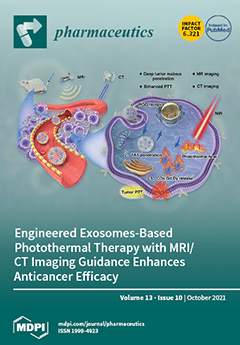Open AccessArticle
Exploring Acceptability Drivers of Oral Antibiotics in Children: Findings from an International Observational Study
by
Thibault Vallet, Yahya Bensouda, Jumpei Saito, Liv Mathiesen, Varsha Pokharkar, Viviane Klingmann, Matthew Peak, Omar Elhamdaoui, Akimasa Yamatani, Ivana Ivanovic, Manjusha Sajith, Juliane Münch, Louise Bracken, Jennifer Claire Duncan, Smita Salunke, Siri Wang and Fabrice Ruiz
Cited by 12 | Viewed by 4613
Abstract
Antibiotics are among the most commonly prescribed drugs in children. Adherence to the treatment with these drugs is of the utmost importance to prevent the emergence of resistant bacteria, a global health threat. In children, medicine acceptability is likely to have a significant
[...] Read more.
Antibiotics are among the most commonly prescribed drugs in children. Adherence to the treatment with these drugs is of the utmost importance to prevent the emergence of resistant bacteria, a global health threat. In children, medicine acceptability is likely to have a significant impact on compliance. Herein we used a multivariate approach, considering simultaneously the many aspects of acceptability to explore the drivers of oral antibiotic acceptability in children under twelve, especially in toddlers and in preschoolers. Based on 628 real-life observer reports of the intake of 133 distinct medicines, the acceptability reference framework highlighted the influence of many factors such as age and sex of patients, previous exposure to treatment, place of administration, administration device, flavor agent in excipients and active pharmaceutical ingredient. These findings from an international observational study emphasize the multidimensional nature of acceptability. Therefore, it is crucial to consider all these different aspects for assessing this multi-faceted concept and designing or prescribing a medicine in order to reach adequate acceptability in the target population.
Full article
►▼
Show Figures






